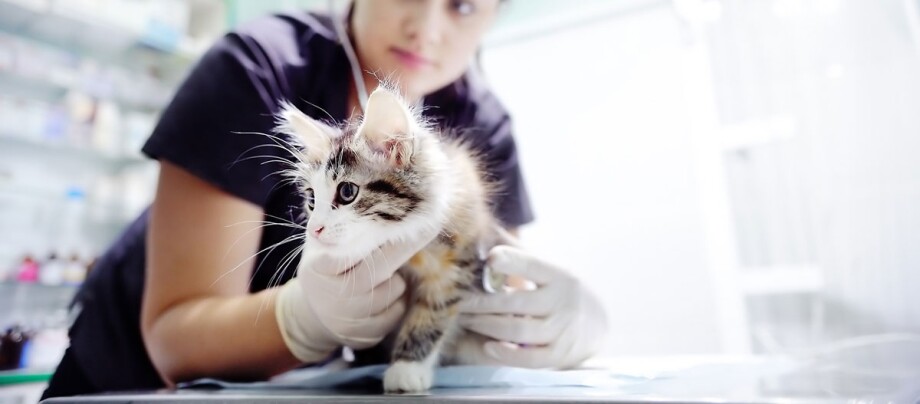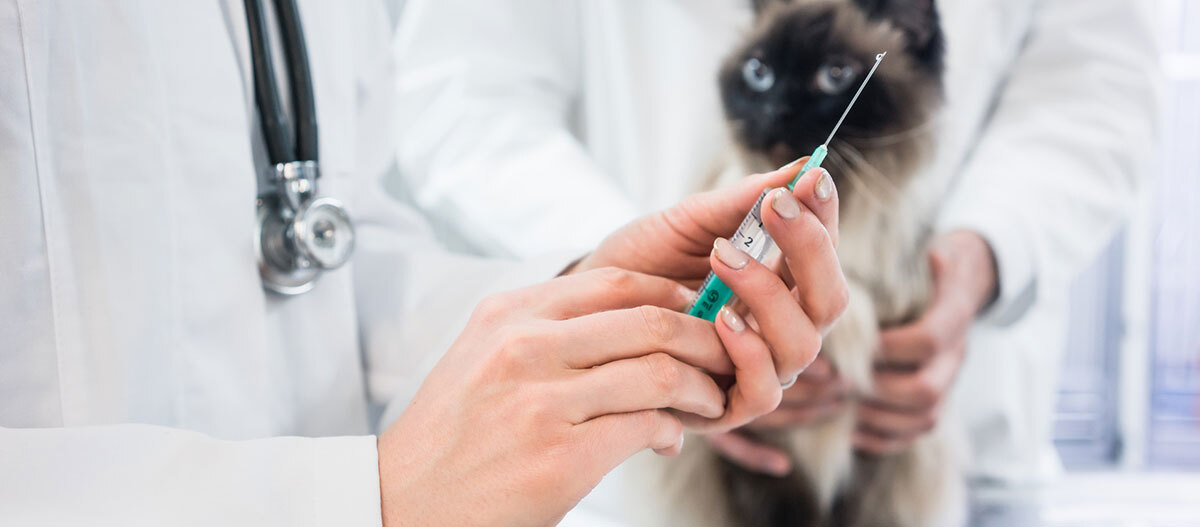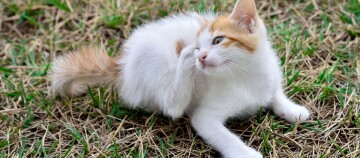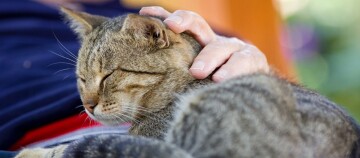How to Deal with Feline Aids or FIV: Dangerous Immunodeficiency
17.10.2022 - Reading time: 5 minutes

AIDS - despite progress and further development in medical research - has not ceased to terrify humans and is still one of the most threatening diseases. But cats are not immune to immunodeficiency diseases either: the "feline acquired immunodeficiency syndrome" is colloquially known as feline AIDS and is similar to the human disease counterpart in many respects.
What exactly is feline AIDS and what does FIV mean?
The immunodeficiency disease of cats is triggered by the feline immunodeficiency virus, FIV for short. This abbreviation has also become established as a synonym for the disease. The virus belongs to the family of so-called lentiviruses: slow viruses in which the onset of the actual disease is delayed.
FIV is common among house cats worldwide, five subgroups of the virus are known. It is estimated that about 11% of house cats worldwide are carriers of the pathogen.
The risk group includes, above all, outdoor cats that meet infected cats or are involved in territorial fights by rivals and sustain injuries in the process: The virus is usually transmitted via blood and saliva. The pathogen enters the bloodstream of the bitten animal via the bites, reaches the lymph nodes and begins to infect the lymphocytes there. In rarer cases, an infected pregnant cat can pass the virus on to its babies while still in the womb. Sexual contact between animals, on the other hand, is medically unremarkable in feline AIDS. It is not only domestic cats that can contract FIV: forms of the virus infection have been documented in big cats worldwide.

What are the symptoms of an FIV cat?
The virus interferes with the body’s own immune system, weakens it and instigates secondary diseases that ultimately lead to death. Strictly speaking, the cat does not die from FIV itself, but from the infections that its own body can no longer fight off. The disease usually only breaks out when the infected cats are already older than five years. By this time, the original contamination may already have occurred some time ago.
The initial symptoms of FIV include fever, a reduction in white blood cells, swelling of the lymph nodes and diarrhoea. Following this phase, the disease may subside for a long time before flaring up again. As a result, the general condition of the diseased animal deteriorates. An FIV positive cat can have symptoms of varying severity: The fur becomes thin, it develops a fever, diarrhoea and inflammation of the conjunctiva, gums or mucous membranes that fail to heal. The cat loses weight, suffers from loss of appetite and swelling of the lymph nodes.
All these clinical implications are effects of an impaired immune system, which can no longer cope with infections, bacteria or fungi. If the disease persists, it can eventually lead to respiratory and gastrointestinal infections, urological and dermatological problems; furthermore, to the onset of cancer and anaemia. Neurological defects are very characteristic, which can manifest themselves with sudden aggression or dementia.
How do I look after an FIV cat?
Feline leukaemia and another viral disease known as “feline infectious peritonitis (FIP)” can develop symptoms similar to those of feline AIDS. The definite detection of FIV can only be done on a serological basis by testing for the presence of antibodies in the blood. To be on the safe side, two such tests should be carried out at intervals, as the formation of antibodies is delayed. A test done too early can give false results.
A cure for FIV is not possible according to the current state of veterinary medicine. Dealing with a cat suffering from feline AIDS therefore does not require immediate care or therapy for FIV, but treatment of the secondary infections and alleviation of their symptoms.
The affected cat should no longer be allowed to go outdoors, for its own protection and that of other cats. The living environment should be as stress-free as possible so that health is not affected by psychological factors. Antiviral chemotherapy can delay the onset of the disease. With the appropriate medication, an infected cat can live for a long time without symptoms. Only when the final phase of the disease commences, is no further therapy possible. The infected animals then usually die within a year. A vaccine against cat AIDS is not yet available in Europe, but sera are being researched. Just as with human AIDS, the different virus strains and mutations make the development of an active substance difficult.
While you cannot prevent a cat from becoming infected with FIV, there are several ways to reduce the risk. Indoor cats that have no contact with potentially infected cats are safest. For outdoor cats, male cats should be neutered as early as possible: This reduces the territoriality of the animals and reduces the number of fights resulting in bites.
Can humans become infected with feline AIDS?
FIV cannot transfer from cats to humans – so there is no risk of infection for humans when handling an infected cat.
The situation is different with conspecifics: If the animals interact peacefully, no risk exists. However, if the healthy cat comes into contact with the blood or saliva of the FIV cat, infection can occur. Careful hygiene measures with common disinfectants control the virus, which is already unstable outside the body.



